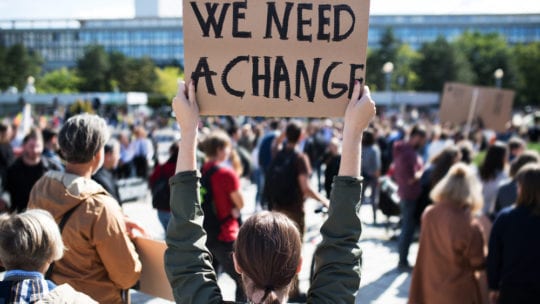
[Editor's Note: In light of recent events, PRNEWS is highlighting some best practices for organizations to take more actionable steps in creating a more inclusive workplace. This article takes notes from “Diverse Sources May Help Bolster Media Revenue” by PRNEWS’ Seth Arenstein and “5 Ways to Transform ‘Diversity & Inclusion’ From Buzzwords Into Action” by Sophie Maerowitz of PRNEWS and The Social Shake-Up.]
According to the Bureau of Labor Statistics the U.S. public relations industry is 87.9 percent white, 8.3 percent African American, 2.6 percent Asian American, and 5.7 percent Hispanic American.
While many agencies and brands have voiced their support via social media posts and statements, real action needs to be taken in order to prove the support the industry claims for a more diverse workforce.
In one such example, GM CEO Mary Barra sent a message this week to employees, suppliers and dealers. The note, entitled "There is a Big Difference Between Seeing What’s Wrong and Doing What’s Right," outlines steps that the organization will be taking to affect change. Barra concludes: "Putting this in writing is not enough. In addition to affirming the above principles, we are taking immediate action," which includes commissioning an Inclusion Advisory Board of internal and external leaders.
Pinterest CEO Ben Silbermann also outlined steps the platform will take both internally and externally. This includes a commitment to continue its progress on improving the diversity of the company, with a focus on leadership. (The company set annual public hiring goals in 2015 to hold itself accountable.)
So how can other organizations invoke real change?
Review Your Recruitment Practices
If you look around your room and see only one color, you are not only missing out on talent, but also perspective. Diverse perspectives from a variety of socioeconomic and racial backgrounds can provide a huge uplift in creativity.
“If you realize your whole marketing department is made up of white people who went to Ivy League schools, you need to figure out how to bring in additional voices,” said Jessica Fish, principal of inclusiv.us. “Because unless your demographic is ‘white people who went to Ivy League schools,’ you’re going to miss the mark...As communicators, whether we’re working on internal or external campaigns, we need to think about who is missing...What identities aren’t showing up?”
Look for search firms that specialize in diversity hiring, if your own HR efforts are lacking. Inquire with professional membership organizations for experienced candidates like the National Black Public Relations Society or Colorcomm.
Read the Room
Does your organization’s work reflect a variety of backgrounds and ideals? Read the messaging on every piece of marketing and communications you send out. Have employees from different age, race and economic backgrounds also review. If a piece is meant for a wide range of consumers or viewers, make sure everyone’s perspective is included.
"Your team needs to look at power dynamics," said Fish. "Work on sharing the mic and developing a deep appreciation of lived experience as well as acquired knowledge.”
Diversify Your Clientele
If you really want to honor the commitment to diversity that your agency or brand has broadcasted, look into contributing time to small businesses or organizations benefiting persons of color. If you are located in a city, look into inner-city programs that may be in need of communications help. With strapped budgets, PR, social media and marketing are usually at the bottom of the task list. For larger, paying clients, look to focus on businesses and organizations that promote diversity in leadership and board membership.
Diversity in Practice
PR pros can suggest change through their own work by proposing diverse sources and speakers to the media. Make it easy for journalists to locate your diverse sources via online newsrooms and your company’s website.
And don’t forget to measure your efforts. Seeing the actual numbers and data of what you are putting out there has a greater impact than just saying you promote cultural diversity. Shoot for a 50-50 split on sources regarding gender as well as race.
Diversity benefits everyone. In 2018 McKinsey released a study of 1,000 global companies and found that increased gender and ethnic diversity is correlated with profitability, resulting in a 33 percent increase in performance.
Nicole Schuman is a reporter for PRNEWS. Follow her @buffalogal
